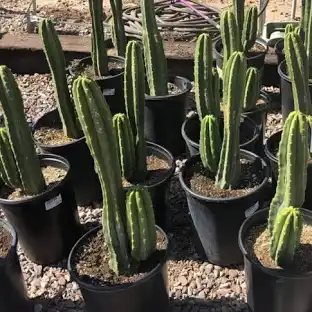What Are Mescaline Capsules? The psychoactive substance mescaline is found in mescaline capsules. The peyote cactus for sale is the source of this substance. People take mescaline pills for recreational or spiritual purposes. The mescaline dosage in the capsules is regulated. They provide a substitute for eating the peyote cactus itself. peyote cactus for sale Overview […]
Exploring the Peyote Cactus: Effects, Uses, and Impacts on the Brain The peyote cactus, scientifically known as Lophophora williamsii, is a small, spineless cactus native to the deserts of the southwestern United States and northern Mexico. Revered for centuries by indigenous cultures, the peyote cactus has garnered attention for its psychoactive properties, medicinal potential, and […]
lophophora williamsii – Peyote Adults (3cm +) The little, spineless cacti known as lophophora williamsii are native to Texas and Mexico and grow very slowly. They have adapted to needing very little water to survive because they are accustomed to growing in the driest areas. Peyote has become an endangered species in the wild, […]
Why People Should Shop with Us for Peyote Cactus When it comes to finding the best place to buy peyote cactus, look no further than our online store. We are committed to offering our customers a seamless shopping experience with unbeatable benefits that set us apart from the competition. Here’s why we are the top choice […]
Golden Barrel Cactus: A Complete Guide to Echinocactus Grusonii The Golden Barrel Cactus, scientifically known as Echinocactus Grusonii, is a popular choice among succulent enthusiasts and desert gardeners. With its striking spherical shape, radiant golden spines, and low-maintenance nature, this cactus has become a coveted addition to landscapes and indoor collections alike. If you’re considering […]
The Majestic Saguaro Cactus: An Icon of the Southwest The Saguaro cactus (Carnegiea gigantea) is one of the most iconic symbols of the American Southwest. Towering over the desert landscape with its signature arms, the Saguaro is a remarkable plant that holds ecological, cultural, and aesthetic significance. This article will provide insights into the Saguaro […]
can you buy peyote cactus? Peyote Cactus: A History of Sacred Use and the Chemistry of Mescaline The peyote cactus (scientifically known as Lophophora williamsii) has long been revered for its spiritual significance, particularly in Native American and Indigenous traditions. With its psychedelic properties derived from the active compound mescaline, peyote has been central to […]
The Ultimate Mescaline Cactus Guide Mescaline, a naturally occurring psychedelic compound, has been used for centuries in spiritual ceremonies and as a tool for self-discovery. Found in certain species of cacti, mescaline offers a unique experience that blends vivid visuals with deep introspection. If you’re curious about the san pedro cactus mescaline, this guide will […]
San Pedro Cactus (Trichocereus) The San Pedro cactus (scientifically known as Trichocereus pachanoi) is a well-known and highly revered cactus species, native to the Andean region of South America. It has a long history of use among indigenous cultures for its psychoactive properties, particularly in traditional healing ceremonies. Known for its distinctive appearance and powerful […]
What Does A Peyote Button Look Like And Where To Get It? Peyote button seeds, derived from the cactus Lophophora williamsii, are small, round structures that typically measure about 3 to 5 inches in diameter. They have a distinctive appearance, characterised by a greyish-green or bluish-green colour and a smooth, spineless surface. The peyote button […]
- 1
- 2










